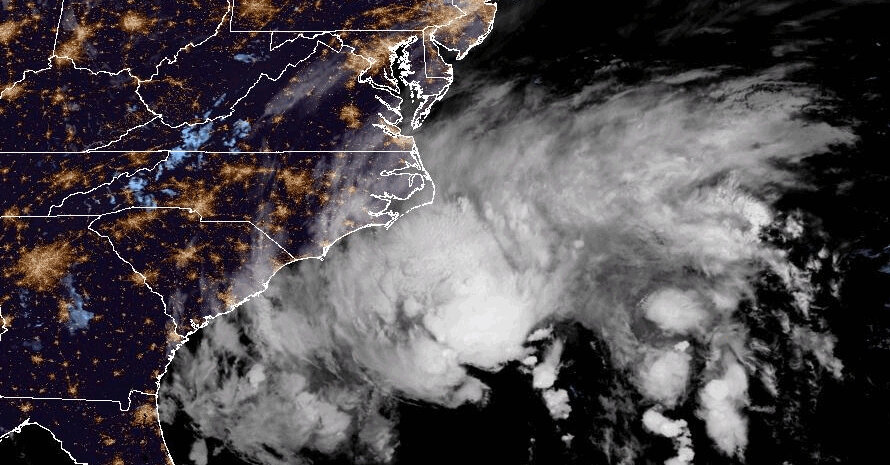A subtropical storm is kind of like a hybrid car, getting its energy from two separate sources. These hybrid storms aren’t fully tropical, but they have tropical storm-force winds and get a name from the National Hurricane Center.
Subtropical storms weren’t always named; for many years they were just given numbers to identify them. In 2002, that changed, and the Hurricane Center began assigning them a name from its tropical cyclone list to avoid confusion when a subtropical cyclone morphed into a tropical storm or hurricane.
Two types of storms to know about.
To understand a subtropical storm more precisely, you must first know the two types of storms it gets its qualities from.
Most people are familiar with tropical cyclones, which include tropical storms and hurricanes and are given names by the Hurricane Center. These storms form over warm tropical oceans and get their energy from evaporating the water that is 80 degrees or higher from the ocean surfaces. Their cores expel that energy upward as their surface winds create a closed circulation pattern around a well-defined center. Although typically calm right at the center, the strongest of the winds, 39 miles per hour or higher for a tropical storm and 74 m.p.h. or higher for a hurricane, are found closer to the center point, like when a hurricane has a clear, calm eye and the band of extremely hazardous weather conditions, known as the eye wall, surrounds it.
The other type of storm is across the mid-latitudes. These storms are normally drawn on weather maps with warm and cold fronts. This is because these mid-latitude cyclones, or extra-tropical cyclones, get their energy not from warm water but from the horizontal clashing of a cold air mass and a warmer air mass. They also produce strong winds, even sometimes as strong as a hurricane, but the winds are typically more widespread. They typically have cold cores and can occur over land or water.
One plus the other leads to a subtropical storm.
A subtropical storm is simply a hybrid of these two storm systems. Like tropical cyclones, they typically don’t have fronts associated with them, have a closed wind circulation around a common center, and only originate over tropical or subtropical waters. However, much of their energy is still derived from the clash of cold and warm air like an extratropical cyclone. Though they can possibly get some energy from the ocean, if the water is at least 70 degrees at the surface, most of their core is cold. Their strongest winds are at least 39 m.p.h. and can blow relatively far from the center.
Mature subtropical cyclones can have a clear, cloud-free center with heavy rain bands extending far away. Although they sometimes resemble a hurricane, they can’t have hurricane-force winds without first transitioning into a tropical cyclone, which is possible.
Often, subtropical storms do go on and transition into fully tropical, said Daniel Brown, a senior specialist with the Hurricane Center. The core warms completely, and at this point it could continue to strengthen into a hurricane if the conditions are right and it is far enough away from land.
For people living in the path of a storm, this is largely a semantic difference, because the effects of tropical and subtropical storms will typically be about the same. The wind structure is the main difference, Mr. Brown said. A subtropical system’s strongest winds will spread much farther than a tropical storm and may not be near the storm’s center.











